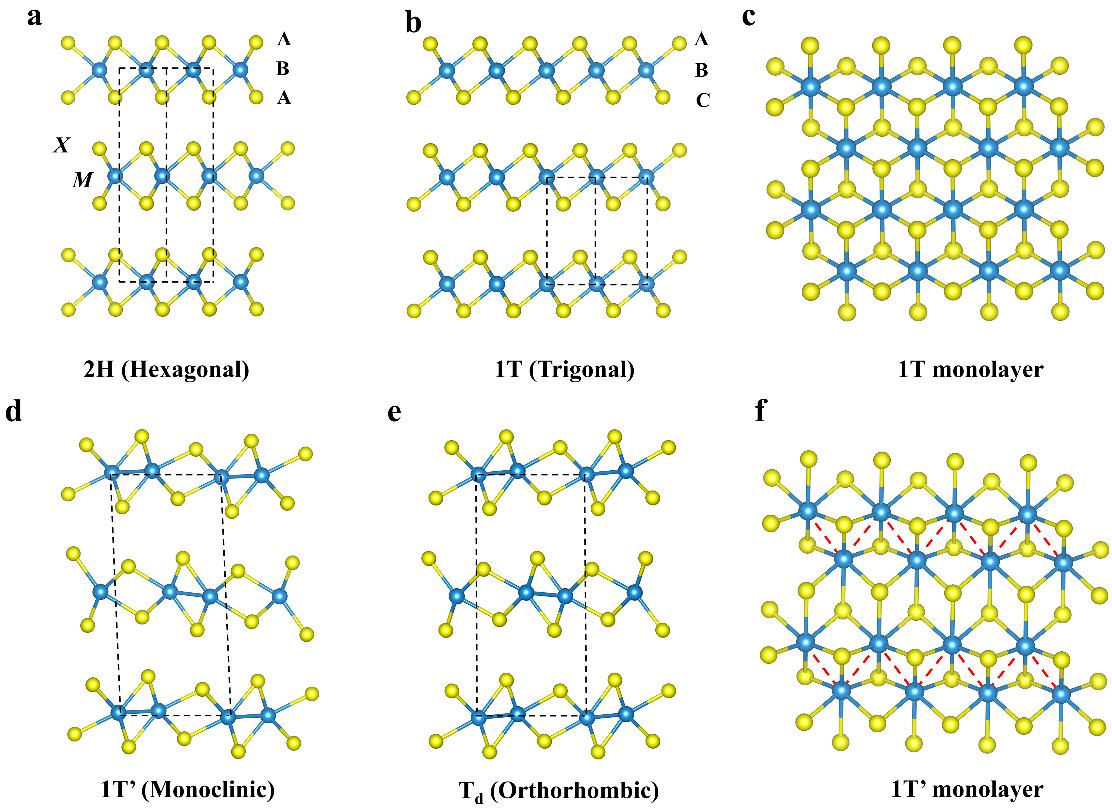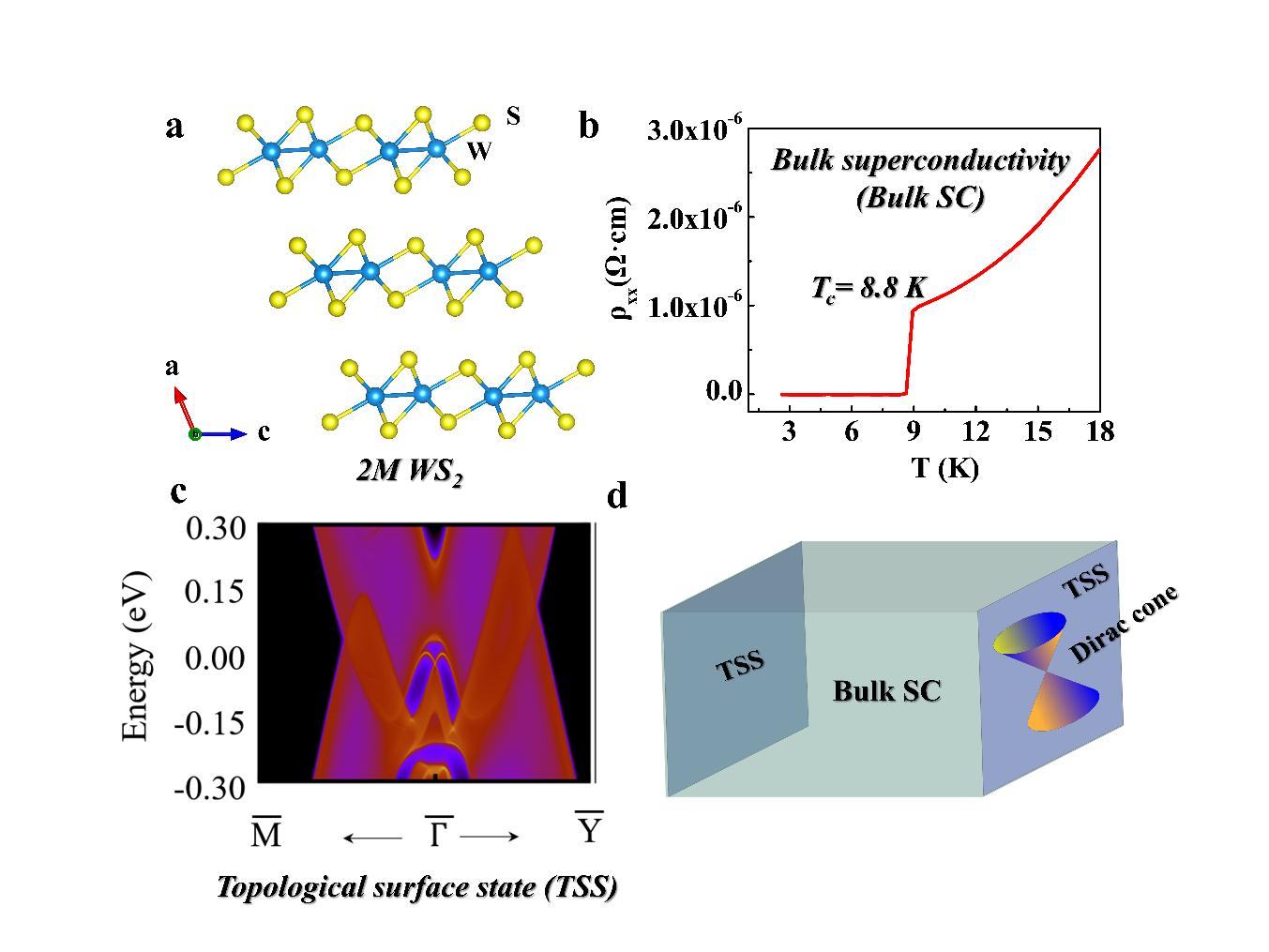New Layered 2M Phase WS2 Superconductor: A Potential Topological Superconducting Material
Date:20-06-2019 | 【Print】 【close】
Due to the abundant crystal structure and the strong spin-orbit coupling, as well as the various peculiar electronic structures and physicochemical properties, VIB layered transition metal disulfide (TMD) MX2 (M= Mo, W; X= S, Se, Te) has attracted extensive attention of researchers. As shown in Fig. 1, according to the coordination and stacking conditions of the layers, the compounds can be divided into 2H phase with triangular prism configuration (Fig. 1a), 1T phase with octahedral configuration (Fig. 1b) and 1T'phase formed by in-plane chemical coordination distortion (Fig. 1d-f). Metal atom M shifts along a certain direction in the plane, making the 1T'phase form the M-M sawtooth chain structure in the plane (Fig. 1f). The single layer 1T'phase can be stacked in different ways to obtain bulk materials with different crystal structures. Two known bulk crystal structures obtained by stacking 1T'single layer include the monoclinic 1T' phase (Fig. 1d) and the orthorhombic Td phase (Fig. 1e). Among them, Td phase MoTe2 and WTe2 are type-II Weyl semimetals, which show large unsaturated magnetoresistance in transport and superconductivity under high pressure.

Figure 1. Crystal structure of MX2. a. 2H phase. b. 1T phase. c. 1T phase single layer. d. Bulk 1T'phase. e. Td phase. f. 1T' single layer.
Recently, researchers in Shanghai Institute of Silicate (SICCAS), Nanjing University, and Shanghai Institute of Microsystems and Information Technology (SIMIT) have cooperated to discover a 2M phase WS2 with a completely new stacking structure. This material exhibits a stacking mode with a monoclinic C2/m space group (Fig. 2a), which is different from that of 1T'(space group P21/m) and Td (space group Pnm21) phases. By means of topochemistry, high quality ternary intercalation compound K0.7WS2 was synthesized, and then K ions were extracted from the parent material in a mild oxidizing environment, resulting in the 2M phase WS2 single crystals with millimeter scale. Transport measurements on this material reveal a superconducting transition at 8.8 K (Fig. 2b), which is the highest among the intrinsic TMD materials. Notably, theoretical calculations show that there are topological surface states with Dirac cone characteristics protected by the topological invariant Z2 in the energy band (Fig. 2c). This is the first time that this topological surface state with Dirac cone has been found in TMD material system, which is completely different from the semimetal states in Td WTe2 and MoTe2. More importantly, 2M WS2 has become a promising candidate for layered topological superconductors due to the coexistence of surface states and bulk superconductivity (Fig. 2d). The related research results were published in Advanced Materials with the title "Discovery of Superconductivity in 2M WS2 with Possible Topological Surface States" (DOI: 10.1002/adma.201901942). Prof. Fuqiang Huang (SICCAS), Prof. Haijun Zhang (Nanjing University) and Dr. Gang Mu (SIMIT) are co-corresponding authors of this paper.

Figure 2. a. Crystal structure of 2M WS2. b. Superconducting properties. c. Topological state. d. Schematic diagram of the physical properties in 2M WS2.
The research is supported by the National key R&D Program of China, the National Natural Science Foundation, the Key Research Projects of the Chinese Academy of Sciences, the Fok Ying-Tong Education Foundation of China and the Youth Innovation Promotion Association of the Chinese Academy of Sciences.